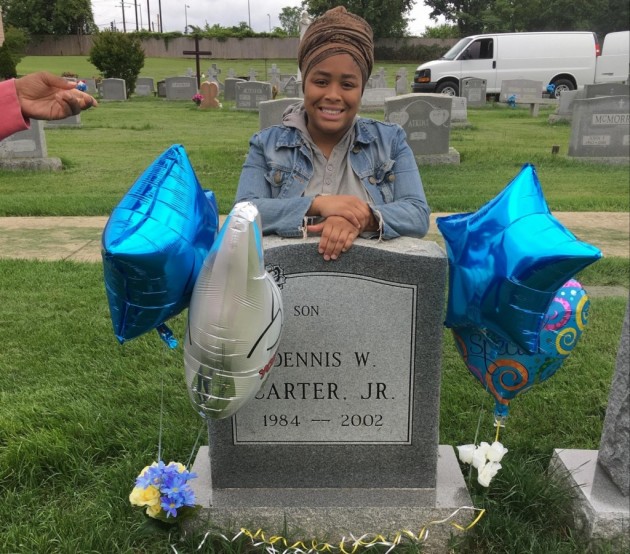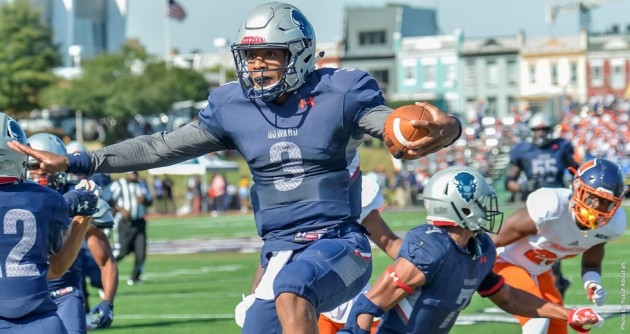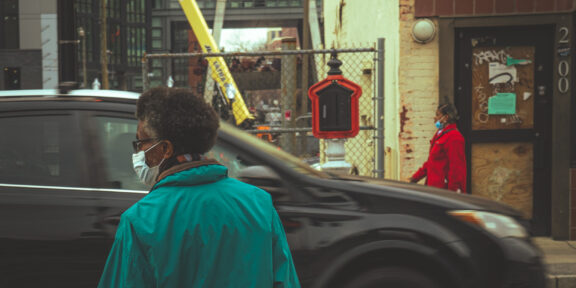Many Link Race to Media’s Failure to Present Diverse Coverage of Missing Persons
Thelma Butler, 76, prepared dinner for her family and greeted people with a tender smile as they entered her intimate home in Southwest Washington. She was composed.
But then she broke-down as she recalled the events leading up to the disappearance of her daughter Pamela Butler. Butler 47, a program analyst for the Environmental Protection Agency, is a brown-skinned African-American female, who was last seen Feb. 12, 2009, in the 5800 block of Fourth Street, Northwest, Washington.
The last time Thelma spoke to her daughter was on Thursday, Feb. 12. She said her daughter and her now ex-boyfriend were making plans to take her out for Valentine’s Day. Butler told her mother that she would pick her up at 3 p.m.
Two hours passed and Butler had not arrived or called. Thelma called her daughter and she got her voicemail. Thelma figured Butler and her boyfriend were stranded.
It was Tuesday and no one had heard from Pamela since Thursday.
Derrick Butler, 46, described his sister as “real meticulous and methodical. She follows through on everything,” he said.
When Thelma, and her daughter Donise Butler and her grandson arrived at Butler’s home to find her mail piled up in the doorway she knew something was wrong, said Thelma.
Tuesday evening Derrick sent his sister a text that said if he didn’t hear from her he would file a missing persons report followed by a another text saying that their mother was in the hospital. She did not respond and he filed a missing person’s report.
Average looking men, women and children from a variety of economic, social and ethnic backgrounds, make up the 102,764 active missing persons as of Jan.1, 2009, according to the National Crime Information Center. However, mainstream media fails to present what is in fact a very diverse missing persons population and many say race is the factor.
Butler’s story received local news coverage by WUSA9, NBC, ABC, FOX, News Channel 8, MSNBC and the Washington Post.
Her brother Derrick said that the media was “pretty good” for the first four days following her disappearance.
News of Butler’s disappearance was not reported on the national level but the stories of Chandra Levy, a congressional intern who had an affair with Rep. Gary Condit, D-California and Laura Garza, a Brooklyn woman who vanished after leaving a Manhattan nightclub with a serial sex offender were covered in great detail on national networks like CNN. Garza is often described in the media as a “curly-haired beauty.”
Garza’s name produced 1,800,000 results on Google, a world-wide web search engine. Levy’s produced 642,000 and Butler’s produced 440,000.
What’s the difference between the three women?
According to many race plays a primary role.
In “Media Backtalk,” a live discussion with Washington Post Columnist and media critic Howard Kurtz, one Washingtonian wrote, “I cannot recollect one case about a young African-American or Hispanic woman/child going missing. Locally, yes. Nationally, no. i.e. the Pamela Butler case in which she has been missing for more than a week. Could you help me understand why the media fails so miserably in this arena?”
Kurtz described it as “the Missing White Women syndrome.”
In his post he added that the white women “generally have to be middle class, and it helps if they’re attractive.”
“There is a culture in America that tends to sympathize with the blond white woman instead of the braided black woman,” said Ernie Suggs, a reporter for the Atlanta Journal-Constitution and the vice president of print for the National Association of Black Journalists.
“There has always been a certain level of interest, a certain fascination with white missing persons,” Suggs said. “Americans identify with who they want to be.”
According to FBI statistics, in 2008, a total of 778,161 missing person records were entered into the National Crime Information Center’s Missing Person File. Thirty-three percent of those missing are African-Americans and they are only 12 percent of the U.S. population. Whites make-up 62 percent of the U.S. population and account for nearly 63 percent of the missing victims which includes Hispanics. Males make-up 47 percent of the missing.
“There is a whole lot of brown and black people (missing),” said Rebkah Howard, partner and founder of Image Pro, a public relations marketing firm, in Miami.
In May 2004, Howard’s niece, Tamika Huston, then 24, disappeared from Spartanburg, S.C. A year later her case received national media attention, not as the story of a missing person but a missing person who was ignored by mainstream media because of her race. Huston was missing for over a year. In August 2005, Huston’s boyfriend was charged in her murder.
Media outlets such as “America’s Most Wanted” helped authorities by airing Huston’s story in March 2005. After the broadcast, an anonymous tipster provided Spartanburg officers with the essential details needed to solve the case.
“Media serves two purposes,” Howard said in an interview. “Not only for attention and new information, but it puts pressure on law enforcement in addition to putting pressure on the perpetrator.”
The color within the missing persons population is often overlooked because “national networks in particular, have found a formula for producing miniature soap operas,” said Howard citing the 2002 Laci Peterson case involving a missing, white, pregnant 27-year old, who was killed by her husband. Howard said that stories involving white females raise ratings for the networks. The media often regards its unequal coverage of missing blacks as unintentional, adding that some stories are more compelling than others but Howard rejects that idea. “Media drives the story. There is a lot of juicy tid/bits but no one knows that because the media didn’t put the story in the spotlight,” Howard said. “I dismiss that argument all of the time.” Media coverage or the lack thereof affects the outcome of any missing person’s case.
“It sounds a public alarm,” said Sgt. Noel Leader, a police retiree and co-founder of 100 Blacks in Law Enforcement Who Care, an organization founded in 1995, located in Brooklyn, N.Y., to serve as a voice for the black community in the justice system. Coverage of missing persons brings attention and encourages the public to get involved by providing tips and leads to solving the case. “As soon as you feel as though your loved one is missing, reach out to the local media and news stations,” said Howard, who was also a public relations professional in Miami. “Flood them with phone calls and then cast a wider net. Be relentless.” Although Howard had the tools and contacts necessary to pitch a story to local, national and regional news, she expressed great frustration in the lack of interest national media had regarding her niece’s case. Around the time Huston’s story was acknowledged by the media, Natalie Holloway, 18, a white female, vanished during her trip to Aruba in May 2005. Her story immediately took over local and national news stations. “You would see another family going through the same pain, and you can’t fault them,” Howard said. “It just makes you so angry. Why do they (missing white females ) get around-the-world coverage? What about those other women?”
“It’s sad that today people of color are not valued as much as whites,” said Metropolitan Police Detective Richard Adams. Howard said that in her attempts to reach out, she found that she was being strung along by editors and producers. The issue, Suggs and Leader agree, has to do with the lack of diversity in the newsroom. According to the Radio-Television News Directors’ 2007 annual study of diversity, blacks represent 9.5 percent of those in TV newsrooms, 4.2 percent of TV news directors and 5.4 percent in newsrooms. “The more minorities in newsrooms, then the more decisions on coverage can be equal or at least debated upon,” Suggs said. “Diversity is the key.” Leader advocates more media ownership among African-Americans. “We need to develop our own media outlets. Stop supporting those that don’t support the things that are important to us,” Leader said. “Blacks have to control their own media to print stories that affect us. Until that happens, black consumers have to pressure papers to address our concerns.”
Butler’s brother Derrick said “if you compare the coverage of Pamela to Chandra Levy, it’s nothing.” But for most African-Americans who go missing he said the coverage is substantial.
Derrick has received phone calls from various media inquiring about updates on the case.
Howard adds that families of missing persons must deal with other issues besides the lack of media attention. “It is so important that you maintain a positive relationship with the law enforcement,” said Howard, who adds that she became good friends with the investigator who worked on Huston’s case. “Missing person cases move very slowly and if you have a bad relationship with the police, the case can be placed on the back burner.” Leader has a different view. “The police, by definition, are public servants and should be just as interested in solving the case as the family is,” Leader said. “It is in everyone’s best interest to maintain a good relationship, but the family should not have to go out of their way.” Leader advises that families constantly ask questions regarding the objectives and strategies as well as continue to check up on the status of the case with officers. “Don’t be intimidated,” he said.
“Everybody is worthy of maximum effort when you’re trying to find missing people,” said Adams. “It (race) doesn’t matter to me. If you’re missing, I’m gonna find you.”
A suspect has not been named in Butler’s disappearance.
Anyone with information is asked to call the Command Information Center at (202) 727-9099. For those who wish to remain anonymous call 1-888-919-CRIME.



